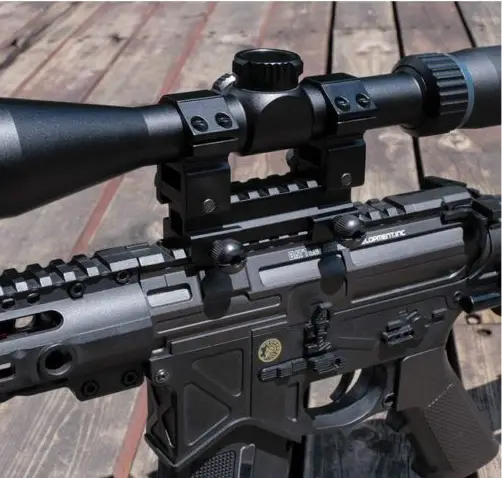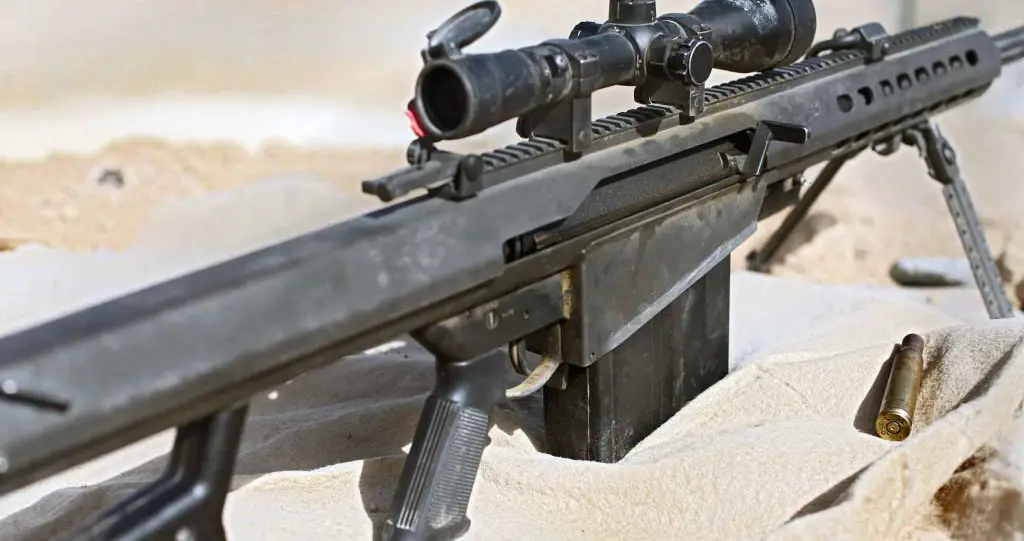
The Key Parts of a Rifle
Rifles are known as one of the more serious types of firearms and for any potential owner of one, you need to know what you’re dealing with.
Before you even attempt to handle a rifle, it’s imperative to have a good understanding of its mechanisms and parts so you can do so safely and accurately.
What are the different parts of a rifle?
There are many types of rifles with different configurations and each of them has unique parts, but at the core of this firearm, you’ll usually find an action, stock, and barrel.
Other parts include an ejection port, rear and front sights, safety, and receiver, among others.
A good understanding of a firearm is essential to use it correctly and when it comes to something as potentially dangerous as a rifle, it’s even more important.
This guide shows you the basic parts of a rifle and what its role is, so you’ll be better equipped to use one.
The Key Parts of a Rifle
Rifles come in all shapes, sizes, and configurations, and their parts can vary as well.
A standard rifle usually features the following parts which we’ve listed so we’ve listed them with a brief explanation about the role they play within this firearm.
Action
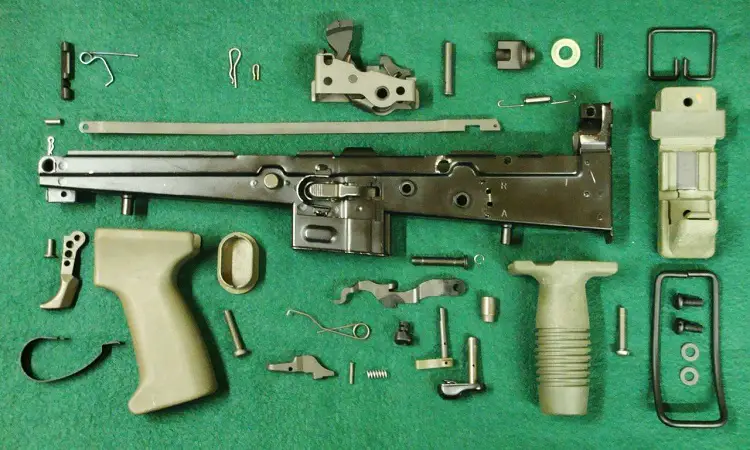
The action is the mechanism found on most breech-loading firearms, including rifles.
This part is responsible for handling the cartridges, including loading, locking, firing, extracting, and ejecting the ammunition, so it’s quite important.
There are a few different types of actions, including break action, bolt action, single action, and double-action referring to how the mechanism works or is configured.
They’re sometimes categorized by the length of the bolt and receiver, with a short-action rifle using cartridges that are less than 2.8 inches and long action of 3.34 inches.
Barrel
The barrel of a gun is where the projectile or bullet travels through after you fire it, and the makeup and size of this part have a lot of impacts.
This long metal tube allows the projectile to expel with accuracy and improved speed, with the rifle having a particularly unique design that it’s famous for.
What sets the rifle apart from other firearms is contained within the barrel, as it features parts called ‘lands’ that are raised areas within the rifling.
The purpose of these lands is to give the projectile extra torque and velocity while minimizing yawning, which makes rifles a serious contender.
Muzzle
Although technically part of the barrel, the muzzle deserves its own explanation.
This part sits at the end of the barrel and it’s where the bullet or projectile leaves from, which is why it must be engineered to absolute accuracy.
In a rifle, the muzzle has been contoured to protect the rifling effect inside of the barrel, and it does this with further grooves.
In some cases, it will also feature a recessed crown for further protection and this can either start on the outside of the muzzle or within.
Trigger Guard
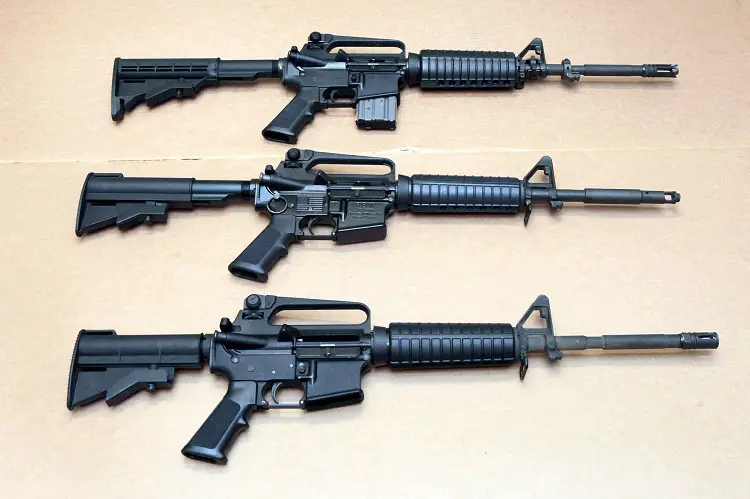
A trigger guard is found on many types of firearms, including rifles, and it’s a small protective loop that’s designed to prevent accidental discharge.
If a trigger is pressed or comes into contact with something and it doesn’t have one of these guards in place, the weapon can’t be fired.
There are different types and placements of trigger guards, depending on the type of rifle and its purpose.
In some rifles that are designed for use in winter and cold conditions, the trigger guard may be repositioned so that the gun is functional and can still be used even with large gloves on.
Safety
The safety is a common mechanism on most firearms and it’s especially pertinent on a rifle.
As these weapons can fire at a great speed and force than others, you’ll always want to ensure the safety of your rifle is on and that there’s no chance it can be fired accidentally or by an unauthorized user who doesn’t understand how to use a gun.
This device works by blocking the rifle’s action which ensures that you’re not able t shoot it until it’s been turned off.
There are a few different mechanisms that achieve this, including a button or a release, depending on the type of firearm you have.
Receiver
One of the most important components of your rifle is the receiver, as this part is where all other critical parts are housed, and where the ammunition is received and then fired through the barrel.
Within a receiver, you’ll find all of the operational parts that make the gunfire, including the mechanisms for the bolt and trigger, the firing chamber, as well as the magazine’s hammer.
According to the law, the receiver is the firearm itself, and if you plan on buying one separately and not as part of a rifle, you’ll still need to follow whatever legislation there is in your state for guns, including background checks.
Rear and Front Sights
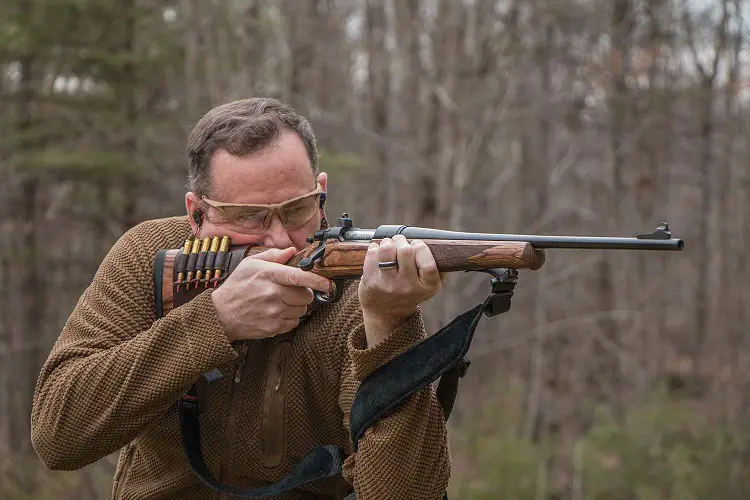
The sight on a firearm is what you use to line up the muzzle with your own view so that you know you’re accurately hitting your target and it’s critical if you’re going to make the shot.
Although not present on all types of guns, they’re important on a rifle because you only have one projectile or bullet to shoot so it has to be precise, unlike a shotgun that sprays its shot.
The most common types of sight you’ll find on a rifle are telescopic, aperture, or open, and these include rear and front configurations.
It’s also possible to attach a sight or scope to a rifle if you want something more advanced, and this can be done by a gunsmith or yourself, as long as you know how to do it correctly.
Ejection Port
An ejection port is as simple as its name suggests and is a place on your rifle where the spent casings as well as misfired and misfed cartridges.
You can also use the ejection port to check out the firing chamber and see if there’s a live round inside or something that needs to be ejected.
The location port can be found as a cut-out area located on the slide of the rifle and you’ll likely find them on the right-hand side.
As most gun owners are right-handed, this caters to the majority of users and ensures that a spent casing doesn’t hit you in the face as soon as it’s ejected because it’s too close.
Magazine
The magazine of a firearm is where the ammunition is stored, and if it’s a repeating firearm as some rifles are, it also helps to feed the ammunition.
When a magazine is loaded with cartridges, it then feeds the next one into the correct position so that it’s ready to be fired out of the barrel.
There are lots of variations in magazines depending on the rifle itself, including pump-action and lever actions that can hold more rounds or even detachable magazines used in some kinds of automatic rifles.
The magazine also determines what type of ammunition or cartridges can be used, and they can vary from gun to gun.
Getting a Grasp on Your Rifle
Rifles have come a long way since they were first invented but many of the terms and mechanisms used to make them remain the same.
The best way to operate your gun safely and accurately is to understand how it works, so commit some study time to learn your rifle and its parts.
Related Questions
Any responsible gun owner should be able to name and identify all of the important parts of the firearms they own, and no matter the type of rifle you use, it’s imperative to have an understanding of it.
To help you do just that, we’ve answered some commonly asked questions about rifles and their use.
What is the Shortest Rifle Barrel Length?
A standard rifle is one that has a barrel measuring 16 inches or more or has an overall length of more than 26 inches.
Anything measuring under this would be classified as a short-barreled rifle or SBR, which refers to a rifle with a barrel length of fewer than 16 inches and one that is more heavily regulated.
What is the Point of an Octagon Barrel?
Traditionally, rifle barrels were made in an octagonal form, because they were easier to make in this shape.
Some believe that hunting with a rifle with an octagonal barrel prevents light from reflecting as they do in a round barrel, so you’re able to be more discreet and stay hidden.
Resources:
![5 Best Pellet Guns Under $100 [2023] 6 bb rifle gun](https://www.armorholdings.com/wp-content/uploads/2022/11/bb-rifle-gun.jpg)
